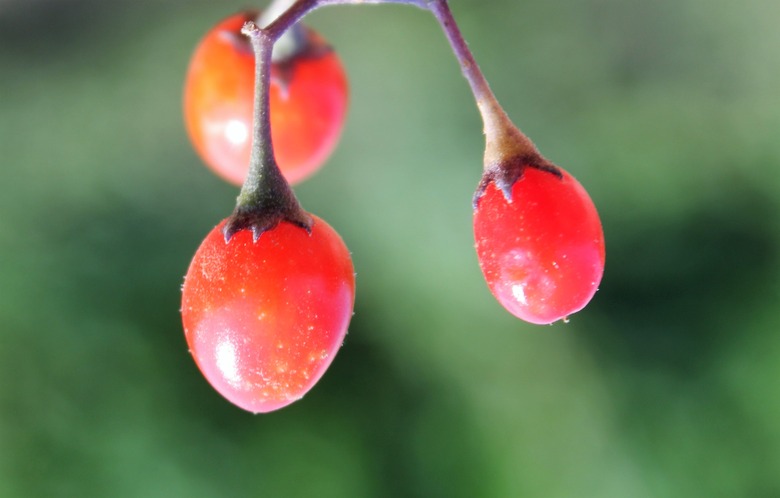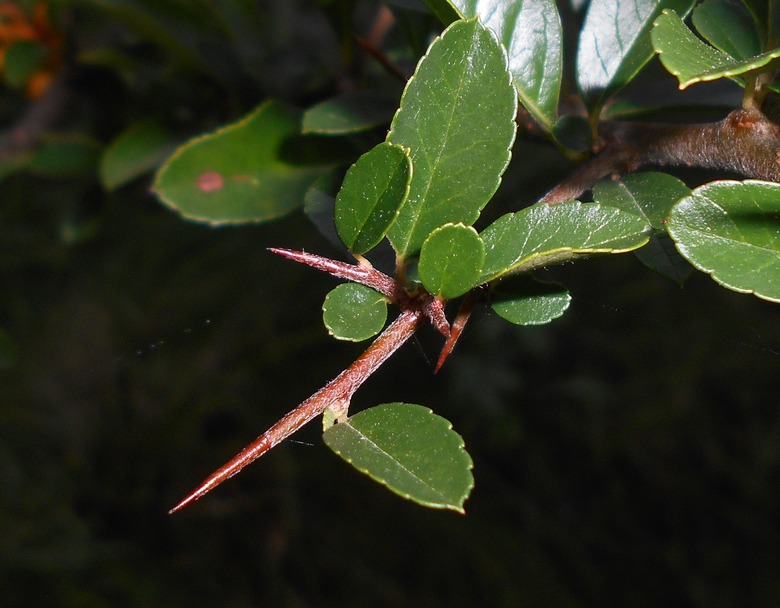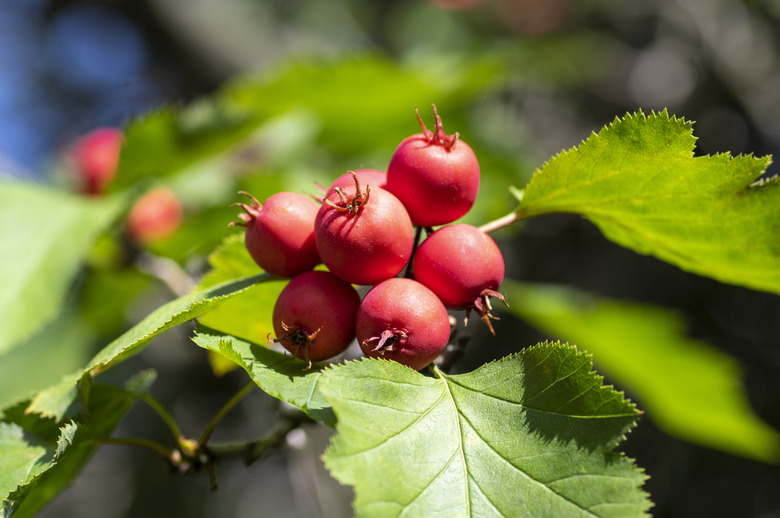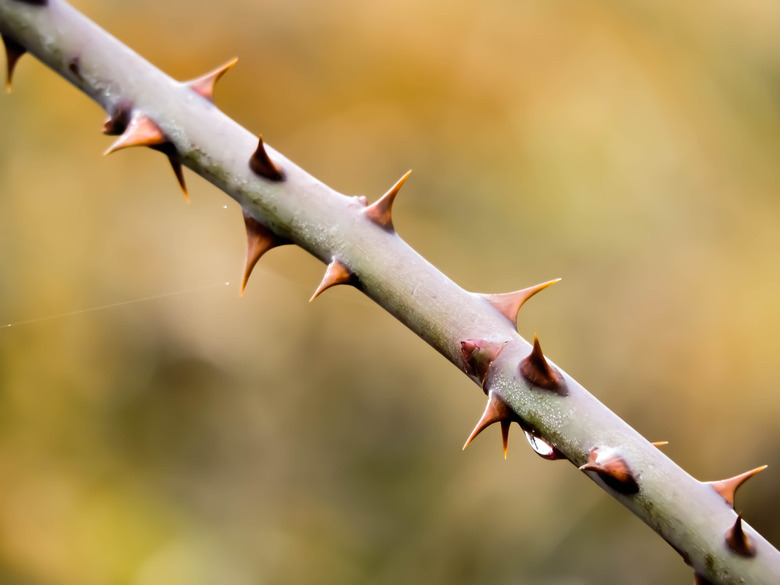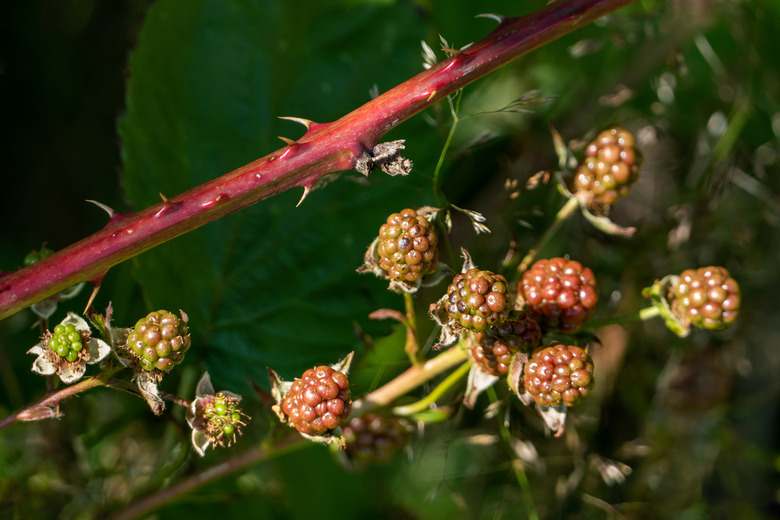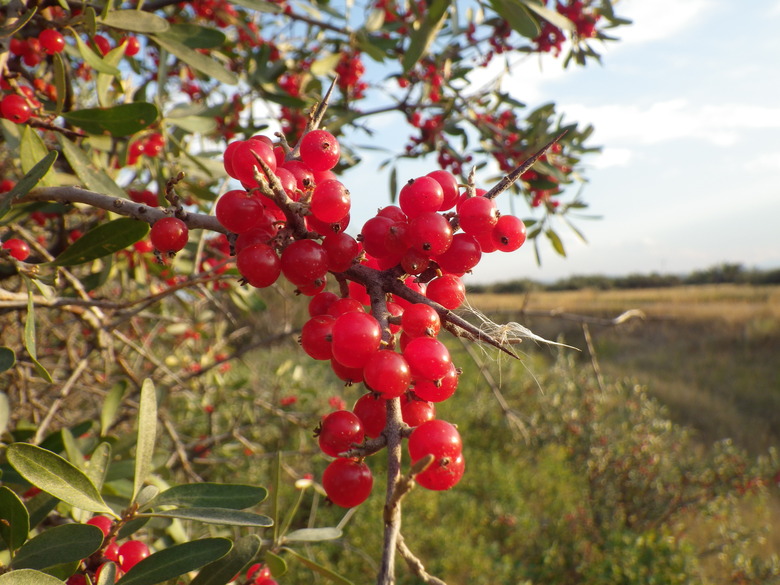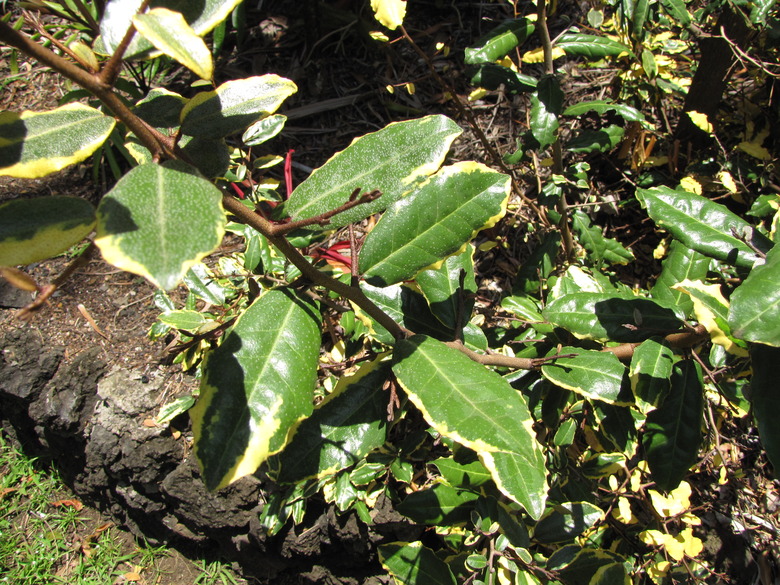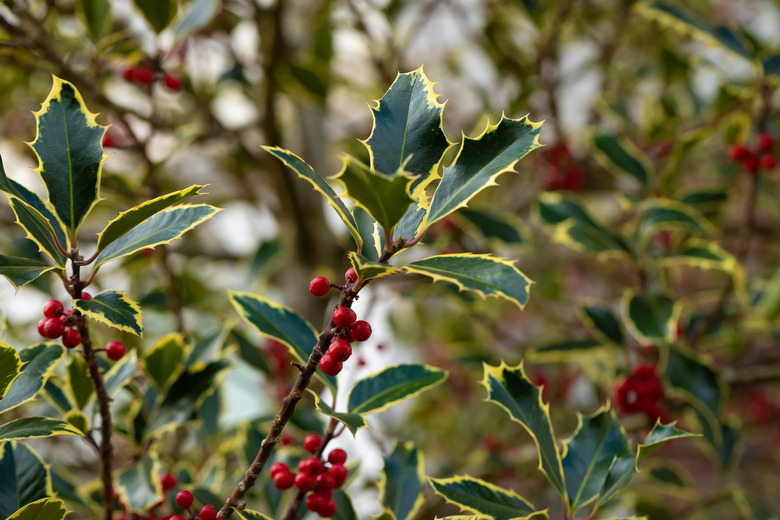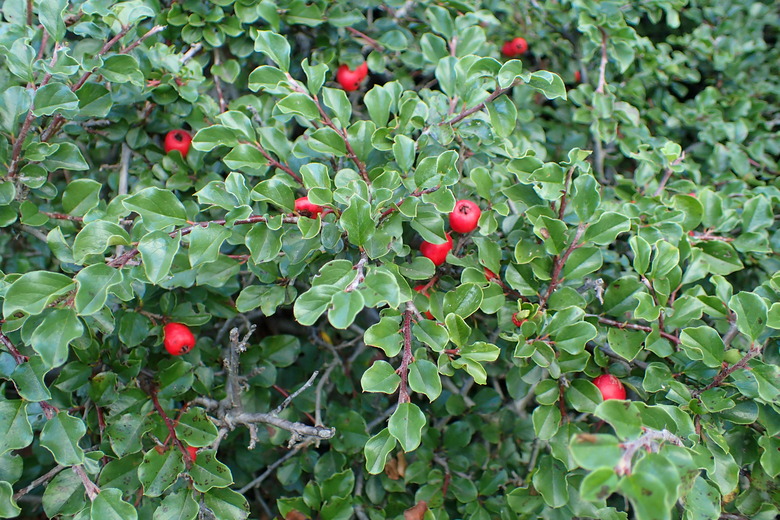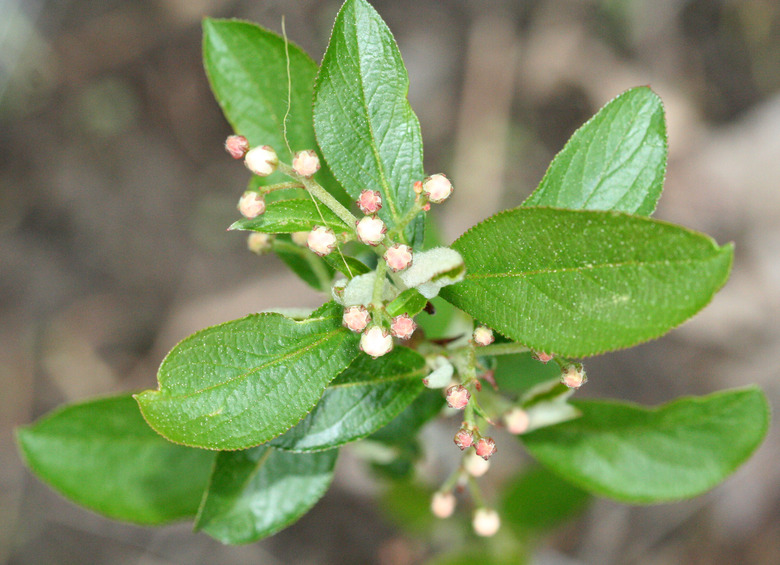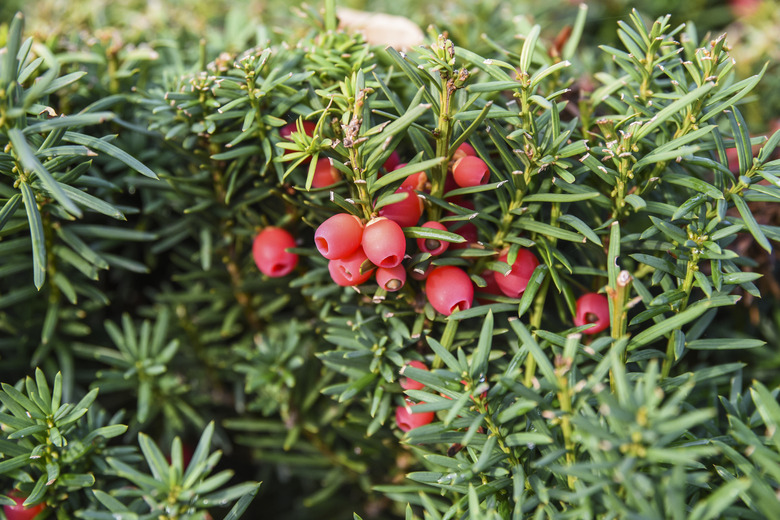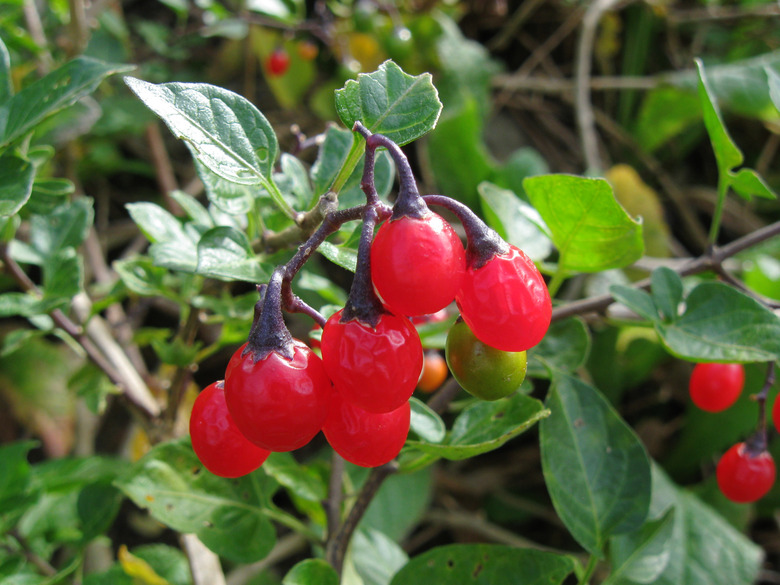How To Identify A Shrub With Red Berries
Identifying a shrub with red berries in your garden can help keep you and your family safe, because some species are poisonous while others are harmless.
Dozens of shrub species produce red berries, so the process of identifying a shrub with that trait can be daunting. However, by examining the shrub closely to observe all of its traits, you can eliminate possibilities and eventually make an educated guess about the shrub's identity.
Look for Thorns
One of the most identifying traits to look for in shrubs with red berries is thorns. Many red-berried bushes have thorns, so the presence—or absence—of thorns will help narrow the possibilities.
Firethorn Bushes
One common species grown in landscaping within USDA hardiness zones 6a to 9b is firethorn (Pyracantha coccinea), a broadleaf evergreen shrub grown for its showy clusters of red berries. The stems are covered in thorns that are typically less than 1 inch in length, and the deep green leaves are small and shiny with smooth edges.
Tip
Firethorn cultivars such as Tiny Tim (Pyracantha coccinea 'Tiny Tim,' zones 6 to 9) are thornless while others produce yellow fruit instead of red.
Scarlet Hawthorns
The scarlet hawthorn (Crataegus coccinea, zones 4 to 7) is another red-berried shrub that is widely grown in gardens. It is a deciduous shrub with dark green, oval-shaped leaves that can reach 3 inches in length.
One of the most distinguishing characteristics of this shrub is its thorns, which line the stems. It also produces dainty white flowers in spring that emit an unpleasant smell.
Tip
The bright red berries of scarlet hawthorn are called "haws." They are technically edible but are not palatable to humans.
Raspberries and Blackberries
Raspberries (Rubus spp.) produce edible red berries along their prickly, thorny canes. These low spreading shrubs grow best in moist soil and partial shade or full sun within USDA hardiness zones 2 to 8, and they sometimes escape cultivation to grow wild in ditches and along creek beds.
Their close cousin the blackberry (Rubus fruticosus, zones 4 to 10) shares a similar overall appearance, and the edible berries are bright red when unripe, which occurs in early summer. Both species produce hairy, highly textured leaves that grow in bunches of five.
Both raspberries and blackberries produce white or pink flowers in early summer, which can help you identify the shrub before the berries form.
Silver Buffaloberry
Silver buffaloberry (Shepherdia argentea) shrubs are spiny deciduous shrubs that can reach 12 feet in height at maturity. They grow best in full sun within USDA zones 3a to 9b, where they are sometimes grown as hedging shrubs.
Silver buffaloberry shrubs have some traits that can help distinguish them from other spiny, red-berried shrubs. They produce yellow flowers in spring and tight clusters of round, 1/4- to 1/3-inch-diameter fruit in summer. The fruit is almost translucent in appearance with a single seed inside.
Tip
Silver buffaloberry earned its common name from the silvery color of its bark.
Silverthorn or Thorny Olive
Sometimes called thorny olive, silverthorn (Elaeagnus pungens) grows best in well-draining soil within USDA zones 7a to 9b. Its gray-green foliage is complemented by showy silver-red berries in autumn, which attract birds
Silverthorn shrubs have 2- to 3-inch-long thorns along their branches which can hook onto nearby structures and trees, allowing this shrub to climb vertically to a height of 12 to 24 feet.
Silverthorn is an invasive species and is a common sight in gardens and in empty fields throughout its preferred climate range.
Examine the Leaves
Leaf shape offers another clue to identifying red-berried shrubs. Some shrubs have very distinctive leaves, while others require a closer look to discover any notable traits.
American Holly
One of the most recognizable foliage types of any red-berried shrub is found on the American holly (Ilex opaca, zones 5a to 9b). The glossy, dark-green leaves vary in shape from oval to deeply toothed with sharp spines on the edges.
The red fruits are brilliant red in color and stay on the shrub during the autumn and winter months. Native to eastern North America, American holly is typically a large shrub but it will also grow into a small tree over time.
Cranberry Cotoneaster
Cranberry cotoneaster (Cotoneaster apiculatus, zones 4a to 7b) is a low-growing shrub that produces an abundance of red berries in late summer and into the winter months. The leaves are oval-shaped and less than 3/4 inches long with a dark green color that shifts to bronze, purple or red in the autumn.
Tip
Cranberry cotoneaster has an easily identifiable growth habit too, with stiffly arching main stems that splay out to a width of 3 to 6 feet.
Red Chokecherry
The small red berries produced by the red chokecherry shrub (Aronia arbutifolia, zones 3a to 9b) are only part of its ornamental appeal. These showy deciduous shrubs also produce eye-catching fall color that make them easily recognizable.
Red chokeberry fruit starts out bright red in summer and ripens to a dark purplish-black in autumn just as the foliage turns a brilliant, fiery red color. The fruit persists after the leaves fall, hanging in drooping clusters during the winter months.
Tip
Red chokecherries' edible fruit can be used in jellies, syrups and jams.
Common Poisonous Red Berries
A handful of common garden bushes produce red berries that are deadly poisonous, so learning how to identify them is important.
Common or English Yew
The common or English yew (Taxus baccata, zones 6a to 7b) is an evergreen tree or large shrub that is deadly poisonous, if consumed, but is grown for its year-round foliage. Yew berries are easily recognizable by the large hole found at the base, which typically reveals a large seed inside.
English yew foliage is needle-like and resembles the foliage of a redwood tree (Sequoia sempervirens, zones 7a to 9b) or a rosemary plant (Salvia rosmarius, zones 8 to 10), but its foliage is interspersed with its showy red berries.
Bittersweet Nightshade
Bittersweet nightshade (Solanum dulcamara, zones 4a to 8b) is a very small bush or large perennial plant with an eye-catching appearance that is sometimes added to pollinator gardens.
Warning
All parts of bittersweet nightshade are highly toxic and can cause fatal poisoning, if consumed.
The plant flowers resemble those of an eggplant (Solanum melongena) with purple petals and yellow stamens at the center. The oval-shaped, 1/2-inch-diameter berries start out green and ripen to a bright, shiny red color.
References
- North Carolina State Cooperative Extension: Pyracantha Coccinea
- Missouri Botanical Garden: Hawthorn
- North Carolina State Cooperative Extension: Elaeagnus Pungens
- North Carolina State Cooperative Extension: Ilex Opaca
- North Carolina State Cooperative Extension: Aronia Arbutifolia
- North Carolina State Cooperative Extension: Shepherdia Argentea
- North Carolina State Cooperative Extension: Taxus Baccata
- North Carolina State Cooperative Extension: Solanum Dulcamara
